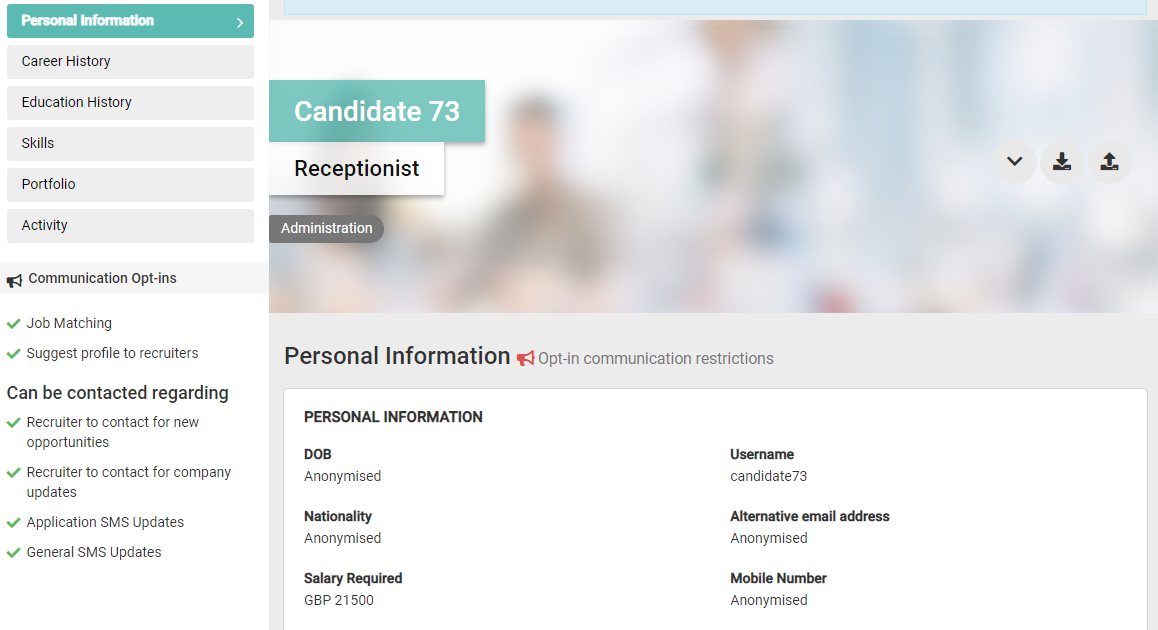The time has never been riper for real progress on workplace diversity. But challenges exist – as they’ve always done. Here’s how recruiters can step up, move beyond box ticking and build diversity programs that deliver real change.
28% of UK business leaders said increasing diversity was a top priority for 2020… but despite years of talk, good intentions haven’t materialised into meaningful action.
In February 2020, The Parker Review Committee published their update report on the state of workplace diversity, Ethnic Diversity Enriching Business Leadership. The report talks about some positive movement – in the last two years, 11 previously all-white FTSE 100 companies have now appointed a person of colour onto their Board – but overall concludes “not enough is being done”.
“Too many of us remain complacent that change will come about naturally through the passage of time”, Sir John Parker writes in his foreword.

Complacency is the enemy of change. Everyone has to step up, because diversity is in everyone’s best interests, and everyone’s responsibility. That means:
- Recruitment, bringing more diverse people into the business.
- Line managers, empowering diverse employees to thrive.
- Colleagues, calling out microaggressions and creating an inclusive culture.
- HR, building succession pipelines that prepare diverse people for promotion.
In the report, Sir John Parker talks about the fundamental role of recruitment at the start of that chain:
“Our continuing lack of ethnic diversity looks less like a failure on the part of minority communities to produce competent candidates, and far more like a choice on the part of business to settle for the familiar and traditional recruitment processes. […]
We […] need to be more assertive – not least by refusing to accept the head-hunter’s excuse that ‘the candidates just aren’t there’. For my part, when I hear this message from my consultants, my next step is to find better consultants who can find the talent either at home or in our world of 7.7 billion people”
Even before the pandemic exacerbated social inequalities along ethnic lines, and before Black Lives Matter threw the worldwide spotlight on racial inequality, this message was a call-to-arms. For businesses to stop settling for “familiar and traditional recruitment processes”. To “find better consultants who can find [diverse] talent”.
The fact is, the diversity agenda has never been more prominent. And recruiters are under huge pressure to deliver.
True – recruitment is only one piece of the diversity puzzle. But recruiters are gatekeepers. If we fall at the first hurdle, and fail to bring more diverse hires into the business, there’s no getting back up.
And in that sense, everything depends on recruitment.
Using Tribepad to remove unconscious bias
HR Magazine define unconscious biases as “our unintentional people preferences, formed by our social experiences.”
That is, they’re the split-second judgements we’re conditioned to make – and typically don’t realise we’re making. Unconscious biases happen around heaps of factors – accent, race, looks, gender, age, weight, height.
They’re not our fault, per se. As HR Magazine explain, “they are the result of our limited cognitive capacity; we subconsciously categorise people when we meet them to avoid having to conduct completely new assessments for every new person we come across”.
Unconscious biases are the by-product of how our brains have evolved. But they are our responsibility.
For recruiters, removing the possibility for unconscious bias is one of the most powerful ways to increase diversity. And that’s where Tribepad’s Anonymous Applications comes in.
Anonymous Applications is an optional feature on Tribepad ATS that’s deceptively simple, given how powerful it is. The upshot is, all applications are totally anonymised:
- No names
- No genders
- No DOB
- No location*
- No nationality
- No education institution names
* (You can still pre-screen candidates in the right location for the role, if that’s important…)

That way, you don’t limit your application pool with restrictive quotas but you ensure unconscious bias doesn’t impact who you hire.
You can set Anonymous Applications by role or by user-type too. So, for example, you could allow your team leader to see full profiles while hiring mangers see anonymous profiles. Or trial Anonymous Applications only for sales positions first, before rolling across the biz.
Recruiters need to nurture – not hunt.
Increasing diversity isn’t as simple as a single feature, however powerful. We know that. Our customers have made most progress on diversity when they’ve fundamentally changed how they recruit, from a reactive ‘hunting’ method to a proactive ‘nurturing’ method.
That means moving away from the endless firefighting cycle, which works in nobody’s best interests. Recruiters who’re under huge time pressure to deliver against headcount targets aren’t best positioned to prioritise diversity.
Removing unconscious bias isn’t alone enough to change that. Finding diverse applicants can be challenging – that’s an unavoidable truth. To increase the diversity talent pool, recruiters need space and time to build relationships.
That’s where Tribepad’s Talent Pooling is important, empowering recruiters to build and nurture talent communities for the future.
So you’re not expected to find, say, great Black, Asian and minority ethnicity (B.A.M.E.) construction managers from scratch, without knowing anyone, on a tight deadline. You’ve invested the time upfront to build great relationships with suitable people – and can react fast when hiring requests come through.
Increasing diversity takes careful unpicking of your data.
Taking action on diversity means doing more than collecting data. It’s about using that data as a launchpad for action. That’s why robust, clear, easy-to-use, easy-to-understand, easy-to-act-on reporting is critical.
Tribepad Diversity Reporting helps you get under the skin of your data, so you can take informed actions to start tackling diversity sticking points. For example:
- Say 35% of applications are from B.A.M.E. applicants and on average, 35% of interviewees are from B.A.M.E. backgrounds too. Great. Dig deeper though and maybe one specific department only has 15% B.A.M.E. interviewees: so that’s where you start investigating. Who recruits for that department? Which roles does that department hire? Who’s reviewing CVs? Using your data to provoke questions like these elevates you beyond reporting to understanding trends, correlations and, crucially, possible corrections.
Or…
- 52% of applications for sales roles are from women – perfect. But actually, you only hire 20% women, and 2% women of colour. Dig into the data and you can understand where those dropping-off points happen. Are specific interviewers showing unconscious bias? Are hiring managers? Or are job adverts not a fair representation of the role, and women are opting out once they hear more?
Or…
- A pre-hire diversity questionnaire shows 15% of applicants preferred not to disclose their ethnicity – but once hired, 25% disclose B.A.M.E. ethnicities. Little wonder, given British citizens from ethnic minority backgrounds have to send an average of 60% more applications to get a positive response than their white counterparts. If 10% of B.A.M.E. applicants worry you won’t hire them because of their ethnic background, how many mightn’t even apply? How can you work harder to showcase an inclusive culture that welcomes everyone?
The possibilities are endless. The point is, diversity reporting itself doesn’t solve the lack of diversity problem: but what you do with that data can. Robust diversity reporting functionality empowers recruiters to be the architects of change.
The time for talk is over.
COVID-19 and the Black Lives Matter movement have exposed some of the deepest inequalities in our societies. They’ve shone a spotlight on the need for everyone, in all walks of work and life, to shoulder responsibility for building a more equal, fairer world.
In the workplace, recruiters are critical in building diversity recruitment programs that ensure everyone has equal opportunity to succeed, grow and thrive – whatever their ethnic background.
Tribepad helps recruiters be the best version of themselves, with multiple award-winning recruitment software that’s used by more than 20-million people worldwide. (In 15 languages, because diversity doesn’t just mean English…). Request a 30-minute demo here.




